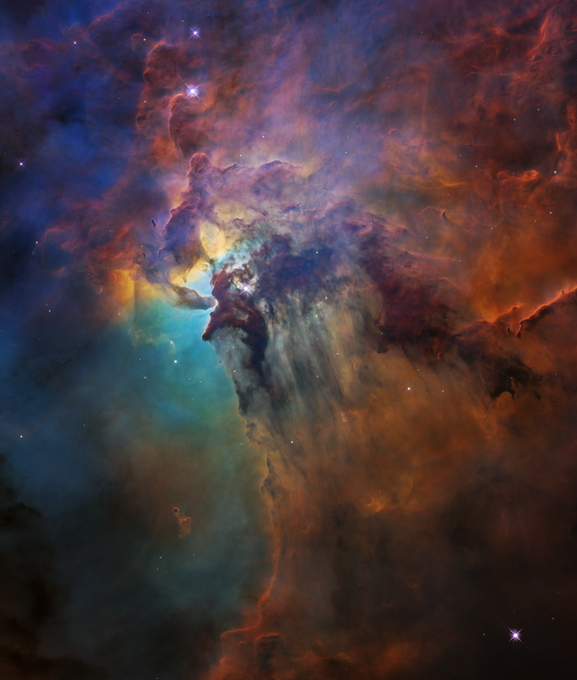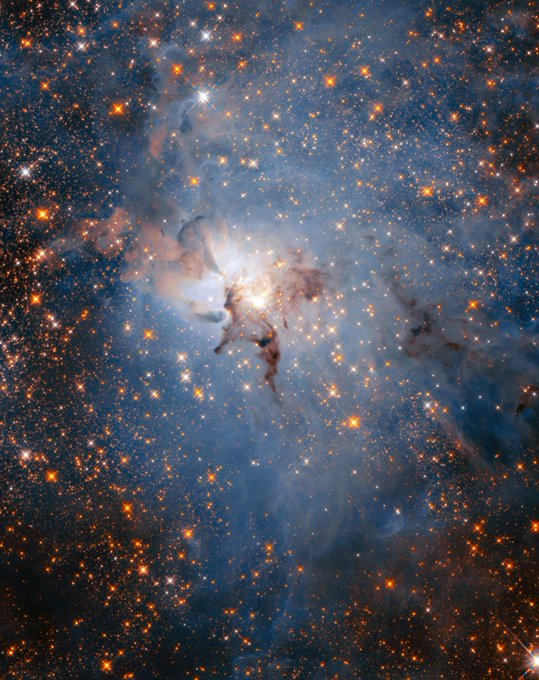light-yearsのTwitterイラスト検索結果。 200 件
#Space: astronomers stunned by #brightest #GammaRayBurst ever recorded — the astounding #outburst came from a galaxy 2 billion light-years away and defies explanation
👁 ► https://t.co/BKzhT9ro06 ◄ via @LiveScience
Did you know that a collection of thousands of #stars lie around 4,350 light-years from Earth, in the constellation Sagittarius?
Set within the Lagoon Nebula, these stars form in a gigantic cloud of interstellar dust and gas.
Image Credit: /Hubble & NASA
Messier 42 (The Orion Nebula)
This stellar nursery, known as the Orion Nebula, has been known to many different cultures throughout human history. It is 1,500 light-years away and the nearest big star-forming area to Earth, with an apparent magnitude of 4.
#inners
#wagnertonight
Early science break.
Orion and the Running Man also known as M42, the Orion Nebula's glowing gas surrounds hot, young stars. About 40 light-years across, it lies at the edge of an immense interstellar molecular cloud only 1,500 light-years away.
A fantastically detailed @NASAHubble image of M101, the Pinwheel Galaxy. The galaxy is about 21 million light-years away. In 2011 a Type Ia supernova was discovered in this galaxy.
Do you remember her? Many people wanted this drawing. But it found connoisseur very quickly💥
«A girl-star named Kissin and the her glowing keeper. Kissin is a double star in the constellation of Veronica's Hair at a distance of approximately 169 light-years from the Sun»⬇️
Barred Spiral Galaxy NGC 1300
Image Credit: Hubble Heritage Team, ESA, NASA
Big, beautiful, barred spiral galaxy NGC 1300 lies some 70 million light-years away on the banks of the constellation Eridanus. This Hubble Space Telescope composite view of the gorgeous i
#wagnertonight
#Maddow
Science break.
Requested by @MadhippieJeani
This cosmic expanse of dust, gas, and stars covers some 6 degrees on the sky in the heroic constellation Perseus.
At the molecular cloud's estimated distance, this field of view would span over 90 light-years.
The Mountains of NGC 2174
Image Credit: NASA, ESA, Hubble Heritage Team (STScI/AURA)
This fantastic skyscape lies near the edge of NGC 2174 a star forming region about 6,400 light-years away in the nebula-rich constellation of Orion. It follows mountainous clouds of gas
However, in 1974, from Arecibo, a message of radio waves fired at a frequency of 2,380 megahertz, with 1,000 kilowatts of power (a good shout), was launched toward the Messier 13 star cluster, more than 20,000 light-years away.
#Merry #Christmas! Here's the Christmas Tree Nebula I captured in deep space, 2,300 light-years from #Earth.
#Thor not only has his own day, but a helmet in the heavens. Popularly called Thor's Helmet, NGC 2359 is a hat-shaped cosmic cloud with wing-like appendages. Heroically sized even for a Norse god, Thor's Helmet is about 30 light-years across. @NASA
https://t.co/GvMtYJAq0F
Orion, Head to Toe! 🤩 The Orion Molecular Cloud is 1600 light-years from Earth! The red star at his shoulder is Betelgeuse, the super blue giant Rigel is at his foot!
Perseus molecular cloud, a giant stellar nursery about 600 light-years away in the northern constellation of Perseus Img1 by @ESAHerschel & @Planck Img2 by @SpitzerScope https://t.co/zEnx5Xilyy #Astronomy #Astrophotography #Science #Space
Supernova in NGC 2525
Image Credit: NASA, ESA, A. Riess (STScI/JHU) and the SH0ES team
Acknowledgment: M. Zamani (ESA/Hubble)
Big, beautiful, barred spiral galaxy NGC 2525 lies 70 million light-years from the Milky Way. About 60,000 light-years across,
A Perfect Spiral
Image Credit: NASA, ESA, Hubble, HLA; Processing: Mehmet Hakan Ozsarac
If not perfect then this spiral galaxy is at least one of the most photogenic. An island universe of about 100 billion stars, 32 million light-years away toward the constellation Pisces, M74
My image of the Pinwheel Galaxy (Messier 101) located ~21 million light-years from Earth. #astrophotography #space
NEW DROP!!🔥🔥
"Acrux V" available on
@formfunction
A completely mysterious new galaxy, predominantly composed of red planets and stars, discovered about 10 billion light-years from the Milky Way ...
Link Below 👇
#formfunction #SolNFT #SolanaNFT #sol #NFT #NFTs #NFTart
Astronomers have found the closest black hole known to Earth, just 1,600 light-years away. It's dormant — at least for now. https://t.co/NSYbp7SXNC






































